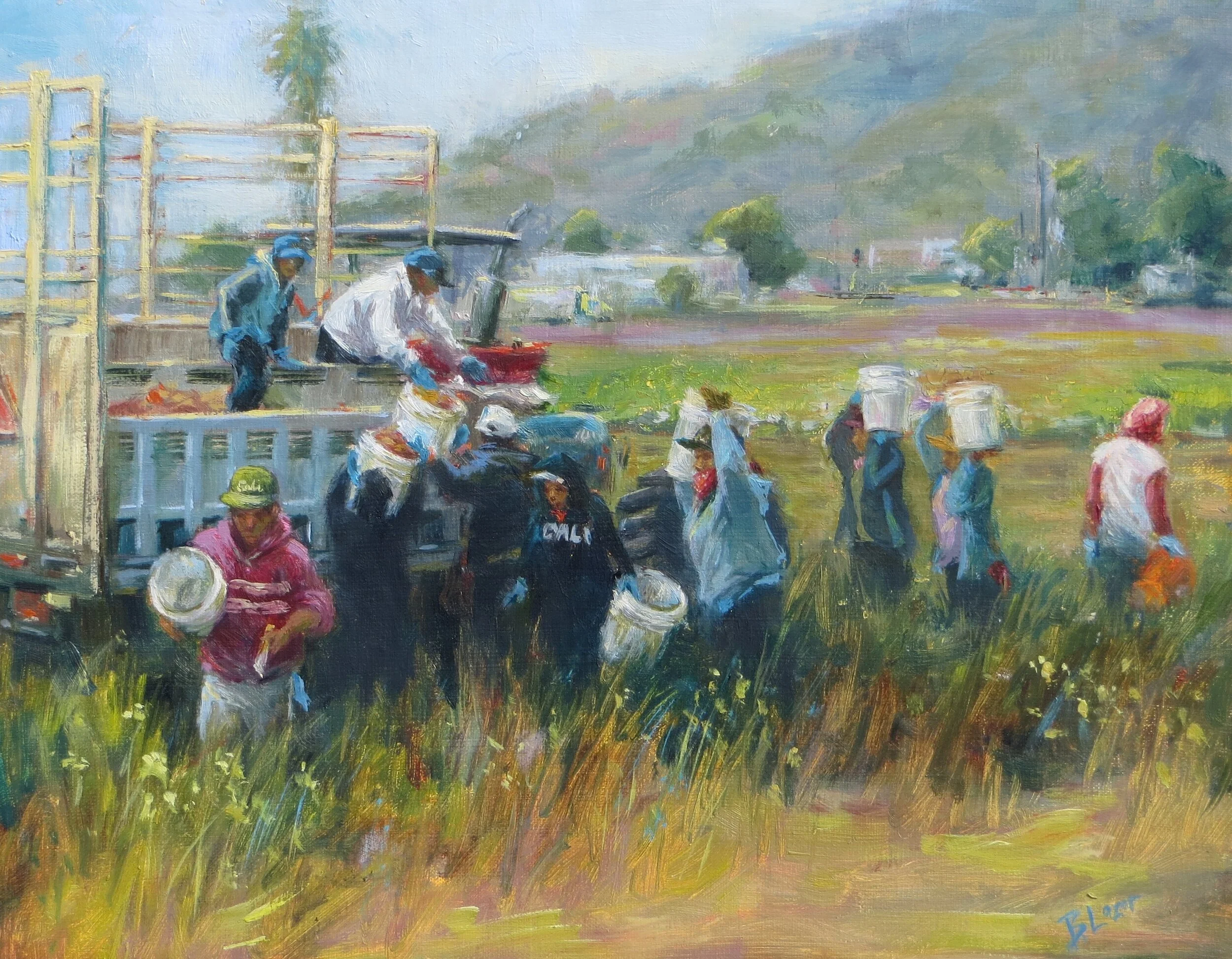Alfredo Ramos Martínez & the Modernist Canon at SBMA
By Brenda Tan, Lum Art Zine/UCSB Arts Writing Intern
The history of Modernism has continually displaced artists of color into ethnographic isolation at the same time it edifies the white male for his ostensibly unprecedented contributions to the canon. This history ignores the rich indigenous histories upon which these men draw their inspiration and constructs the myth of the individual genius who transcends cultural binds.
The works of Alfredo Ramos Martínez challenge this hegemonic narrative through their integration of Mexican culture with formal abstraction, countering the understanding of representational breakthroughs made by 20th century abstraction as a uniquely European contribution and ability.
LEFT: Alfredo Ramos Martínez, Mujeres con flores (Women with Flowers), ca. 1946. Tempera and Conté crayon on newsprint. SBMA, Gift of the P.D. McMillan Land Company, 1963.32.1 © The Alfredo Ramos Martínez Research Project. RIGHT: Alfredo Ramos Martínez, Vendedoras de flores (Flower Vendors), ca. 1942. Tempera and Conté crayon on newsprint. SBMA, Gift of the P.D. McMillan Land Company, 1963.31. © The Alfredo Ramos Martínez Research Project.
_______
In conversations with Rachel Heidenry, curator of the Santa Barbara Museum of Art’s recent exhibition of works by Ramos Martínez, the artist’s unique place in the Modernist canon is illumined.
Ramos Martínez served as the director of the Escuela Nacional de Bellas Artes in Mexico City from 1910 to 1929. During his tenure, he opened the first open air schools in the country and encouraged his students to draw inspiration from quotidian life. His interest in the everyday manifests itself as one of the recurrent subjects of his work. La escuela (The School) optimizes the structural elements afforded by newsprint—his preferred medium for drawing—and the columns create a scaffolding for architectural elements.
The stringent control of symmetrical congruity and sharp, linear form conveys Ramos Martínez’ methodical orderliness, painting an optimistic view of the future for the direction he is taking it in. The sharpness of this structure is juxtaposed with the ambience of nostalgia established by sparse touches of primary colors in a landscape of earthy tones.
Underlying this sentimental depiction of rural indigenous life are a slathering of “Employment Offered” headlines that contextualize the painting within the era of the Great Depression. This tension highlights the differences between indigenous culture and Western urban life, situating itself as a proponent of Mexican culture and questioning the notion that modern art forms can only originate from urban modernity.
Ramos Martínez consistently maintained his roots within the celebration of Mexican culture throughout his life. The newsprint structure also dictated the framework of the drawing, Vendedoras de flores (Flower Venders). The columns scaffold representations of people though rather than a building. The rigidity pares down the figures of the women into repeatable, essential forms—a formal approach that lies at the base of abstraction.
Alfredo Ramos Martínez, printed by María Sodi de Ramos Martínez, Veneración (Veneration), 1949. Serigraph. SBMA, Gift of Mrs. W.W. Seymor, 1950.13. © The Alfredo Ramos Martínez Research Project.
The symmetry of the human form coheres with the lines that denote the Earth, referencing the close harmony associated with indigenous Mexican culture and the land. The harmony of terrestrial fruits is further cultivated by the inclusion of the watermelon and the national flower which coexist to form the green, red and white of the Mexican national colors. The succinct application of symbolic textures creates a deceptively simplistic composition. The precise meaning of various pictorial elements within the composition forms a mosaic of Mexican culture which achieves a new form of representation that is undeniably modern.
The SBMA exhibition of Ramos Martínez’ drawings display the artist’s ability to emulate indigenous culture through the taut manipulation of intentional compositional elements and achieve a poignant marriage between thematic coherence and formal abstraction.
Alfredo Ramos Martínez, Virgen y niño (Virgin and Child), 1935. Charcoal and gilt paint on paper. SBMA, Gift of Mrs. John M. Case in memory of John Hopkins Denison, Jr., 1952.22. © The Alfredo Ramos Martínez Research Project.
Alfredo Ramos Martínez: On Paper is on view October 27 to February 9, 2020 at the Santa Barbara Museum of Art, 1130 State St., Santa Barbara.







